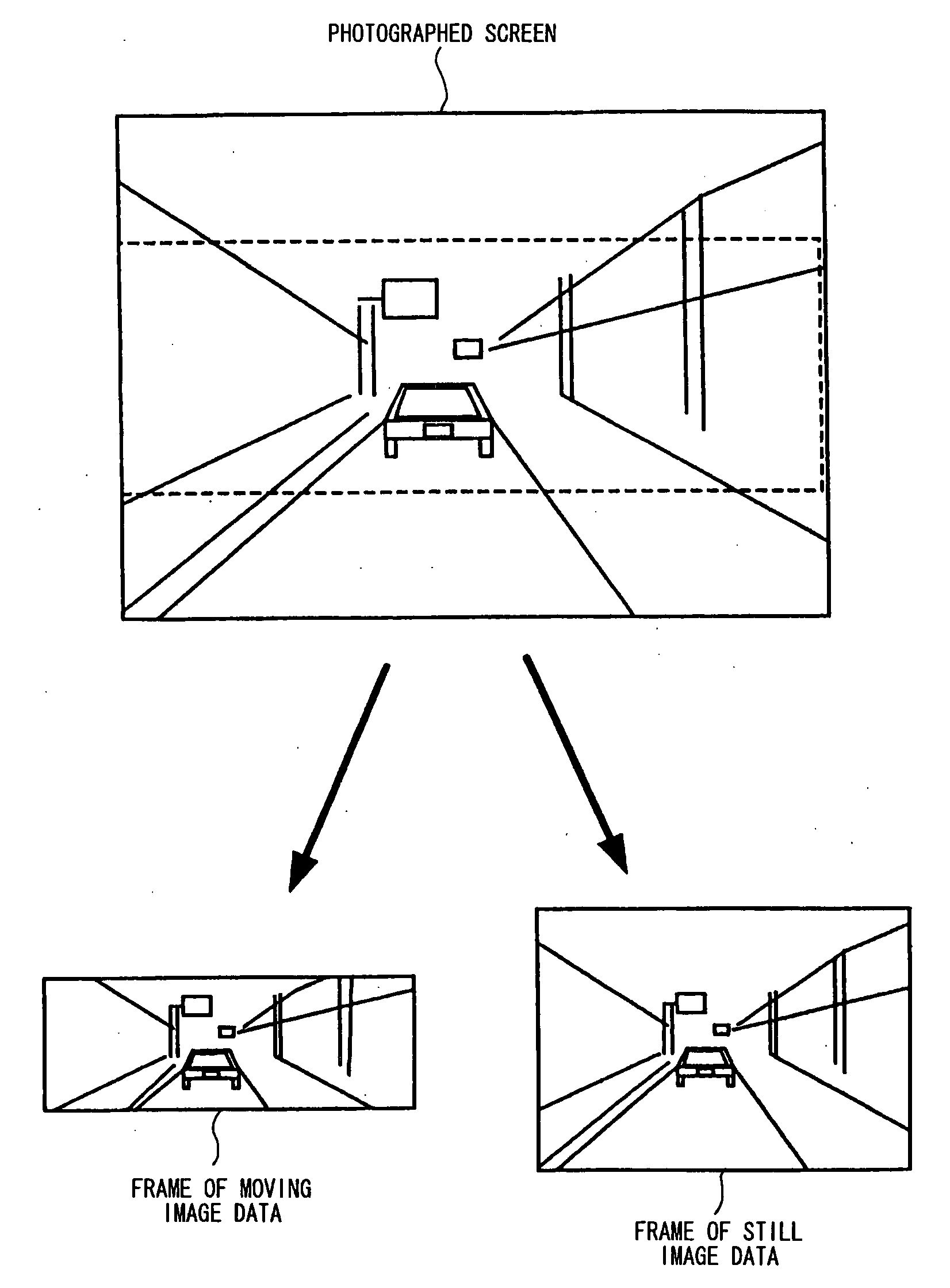Imaging Apparatus and Drive Recorder System
a drive recorder and image resolution technology, applied in the field of image resolution and drive recorder system, can solve the problem of insufficient image resolution to analyze a pictur
- Summary
- Abstract
- Description
- Claims
- Application Information
AI Technical Summary
Benefits of technology
Problems solved by technology
Method used
Image
Examples
first embodiment
Description of a First Embodiment
[0028]FIG. 1 is a block diagram showing a configuration of a drive recorder camera according to a first embodiment. FIG. 2 is an appearance view of the drive recorder camera and FIG. 3 is a diagram showing an attached state of the drive recorder camera.
[0029]A drive recorder camera 10 according to the first embodiment is attached to a position in a car, from which an area including a viewing field ahead of a driver's seat can be photographed, (for example, near a rearview mirror in the car). Then, the drive recorder camera 10 can photograph an image around the car during car driving (refer to FIG. 3). As shown in FIG. 2A, a photographic optical system 11 and a light emitting section 17 are disposed on the front side of a housing of the drive recorder camera 10. Also, as shown in FIG. 2B, a liquid crystal monitor 21, and an operation switch 22a and a release button 22b forming an operation member 22 are disposed on the rear side of the housing of the ...
second embodiment
Description of a Second Embodiment
[0070]FIG. 8 is a timing chart of photographing a still image in a second embodiment. Here, in the embodiment described below, the same constituents as in the first embodiment are denoted by the same symbols and duplicated explanations will be omitted.
[0071]The second embodiment is a variation of the first embodiment, and a CPU 23 carries out photographing a moving image for a predetermined time period just after an accident occurrence, and carries out photographing a still image in multiple times after having finished photographing a moving image.
[0072]In this second embodiment, in addition to almost the same advantages as in the first embodiment, it is possible to obtain moving image data in which motions of an object are more natural, since photographing of a moving image is not interrupted by photographing of a still image.
third embodiment
Description of a Third Embodiment
[0073]FIG. 9 is a flow chart showing operation of a drive recorder camera according to a third embodiment. This third embodiment has a configuration in which accident image data starts to be generated in advance at a sudden braking. Here, S201 and S202 in FIG. 9 correspond to S101 and S102 in FIG. 5, S207 to S 210 in FIG. 9 correspond to S103 to S106, respectively, and explanation thereof will be omitted.
[0074]Step S203: A CPU 23 determines whether a car has braked suddenly or not. More specifically, the CPU 23 determines that a car has braked suddenly (1) in a case where a braking signal is input into the CPU 23 from the car and a swing value larger than a threshold value is detected at the same time from a swing sensor section 33, (2) in a case where an output pattern from the swing sensor section 33 corresponds to a pattern which was experimentally obtained for a sudden braking, or the like. Then, if there is a sudden braking (YES), the process go...
PUM
 Login to View More
Login to View More Abstract
Description
Claims
Application Information
 Login to View More
Login to View More - R&D
- Intellectual Property
- Life Sciences
- Materials
- Tech Scout
- Unparalleled Data Quality
- Higher Quality Content
- 60% Fewer Hallucinations
Browse by: Latest US Patents, China's latest patents, Technical Efficacy Thesaurus, Application Domain, Technology Topic, Popular Technical Reports.
© 2025 PatSnap. All rights reserved.Legal|Privacy policy|Modern Slavery Act Transparency Statement|Sitemap|About US| Contact US: help@patsnap.com



